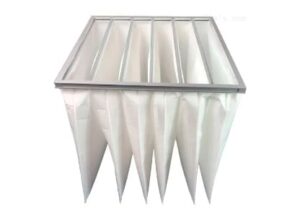When it comes to maintaining clean and healthy indoor air, selecting the appropriate MERV (Minimum Efficiency Reporting Value) filter is essential. This article breaks down the science and technology behind MERV ratings, helping you make an informed decision for your home or business. From understanding the intricacies of the rating system to choosing the right level of filtration, this guide covers it all with a structured and detailed approach.

Understanding MERV Ratings
MERV, or Minimum Efficiency Reporting Value, is a standardized system that measures the efficiency of air filters in capturing airborne particles. Developed in 1987 by the American Society of Heating, Refrigerating, and Air Conditioning Engineers (ASHRAE), the MERV scale provides a clear picture of a filter’s performance across particle sizes, balancing filtration capability and energy efficiency.
How MERV Ratings Work
The MERV scale ranges from 1 to 20, with higher numbers indicating filters capable of capturing smaller particles. While it may seem intuitive to choose the highest MERV rating available, doing so can reduce energy efficiency and place strain on HVAC systems. Selecting the right MERV rating depends on the specific air quality needs of your environment.
| MERV Rating | Particle Removal Efficiency | Target Particles | Recommended Use |
|---|---|---|---|
| 1-6 | 20% for particles ≥10 microns | Dust, pollen, and carpet fibers | Industrial or minimal filtration needs |
| 8-13 | 20-85% for particles ≥1 micron | Mold spores, pet dander, cooking dust | Residential and general commercial |
| 14-20 | 90%+ for particles <1 micron | Smoke, bacteria, viruses | Hospitals, laboratories |

Why MERV Ratings Matter
A proper understanding of MERV ratings allows you to select filters that strike a balance between air quality and HVAC efficiency. Here’s a closer look at the key benefits and considerations:
The Role of MERV in Air Quality
Filters with higher MERV ratings trap smaller particles, making them ideal for environments requiring high air purity, such as hospitals. For homes, filters in the 8-13 range are typically sufficient to remove allergens and improve indoor air quality without excessive energy costs.
Balancing Energy Efficiency
High-efficiency filters can restrict airflow, causing HVAC systems to work harder. This underscores the importance of choosing a MERV rating suited to your specific needs to prevent unnecessary energy consumption and equipment strain.

Exploring MERV Rating Categories
MERV 1-6: Basic Filtration
Filters in this range provide minimal filtration, removing larger particles such as dust and carpet fibers. While energy-efficient and affordable, they are unsuitable for individuals with allergies or asthma.
- Best For: Industrial settings or environments with minimal filtration needs.
MERV 8-13: Optimal for Homes
This category strikes a balance between efficiency and performance, capturing particles like mold spores, pet dander, and auto emissions. Filters in this range are excellent for residential and light commercial use.
- Pros: Effective for allergy sufferers, versatile across various applications.
- Cons: Slightly higher cost and reduced energy efficiency compared to lower-rated filters.
MERV 14-20: High-Efficiency Filtration
Filters in this range are designed for maximum particle capture, removing bacteria, smoke, and even viruses. They are typically used in medical and laboratory environments.
- Drawbacks: Expensive and less energy-efficient.
- Applications: Hospitals, clean rooms, and specialized industries.
Additional Considerations for MERV Selection
Comparing MERV with Other Rating Systems
Alternative systems such as MPR (Microparticle Performance Rating) and FPR (Filter Performance Rating) are less standardized. The MERV scale remains the gold standard due to its universal applicability across brands and environments.
Tips for Maximizing Filter Efficiency
- Regular Replacement: Neglecting to change filters can strain your HVAC system and lead to increased energy costs.
- Avoid Over-Specification: Using overly efficient filters in residential settings can be counterproductive.
- Bulk Purchases: Save time and money by purchasing filters in bulk.
Summary of Recommendations
Best MERV Ratings for Homes
For most homes, a MERV rating between 8-10 offers the ideal balance of air quality improvement and cost efficiency. These filters effectively remove allergens and pollutants without overburdening your HVAC system.
Pro Tips for Long-Term Efficiency
- Opt for Middle-Range MERV: Higher isn’t always better; consider your specific air quality needs.
- Change Filters Regularly: Prolonged use of clogged filters reduces efficiency and increases costs.
- Leverage Subscription Services: Ensure timely replacements by subscribing to a filter delivery service.
By understanding the science of MERV ratings, you can improve your indoor air quality while ensuring the longevity and efficiency of your HVAC system. Choose wisely and breathe easier.






